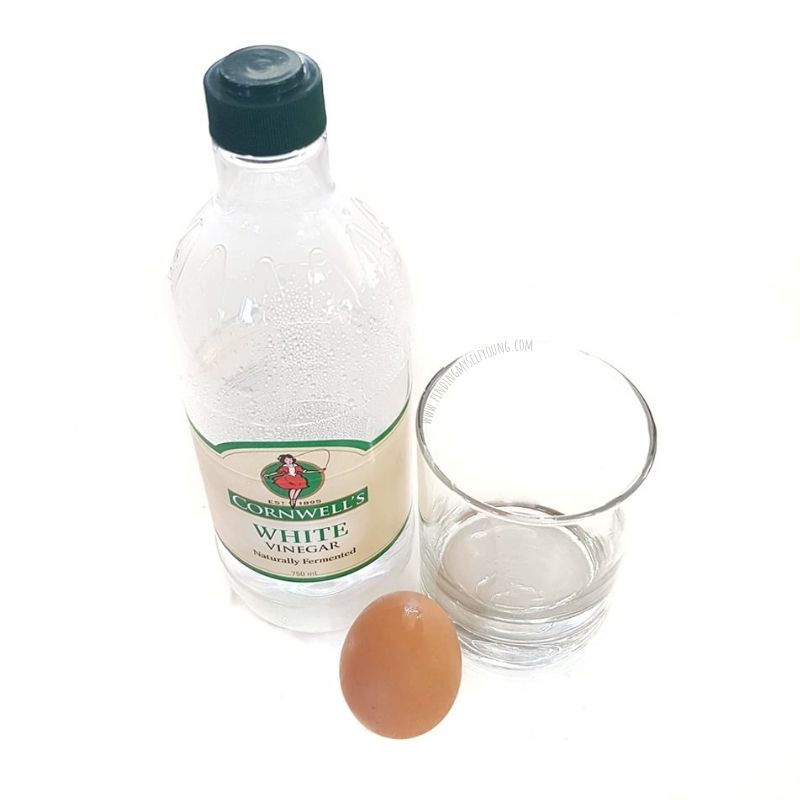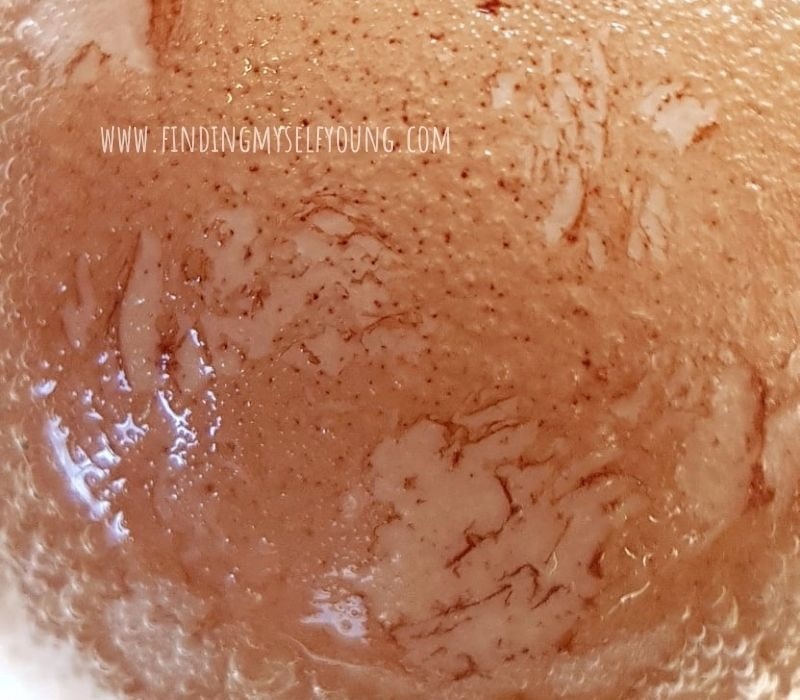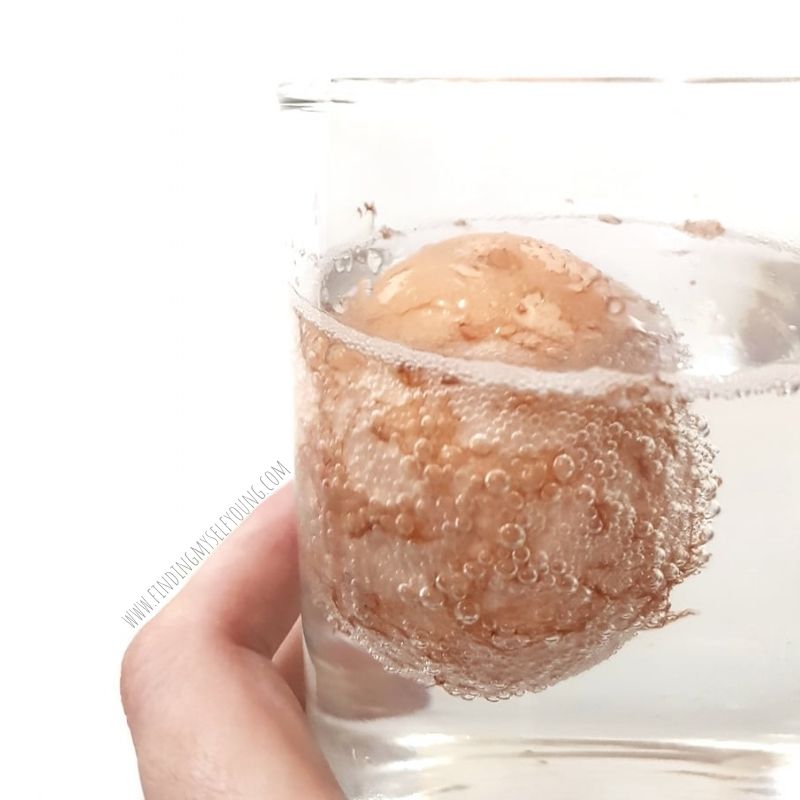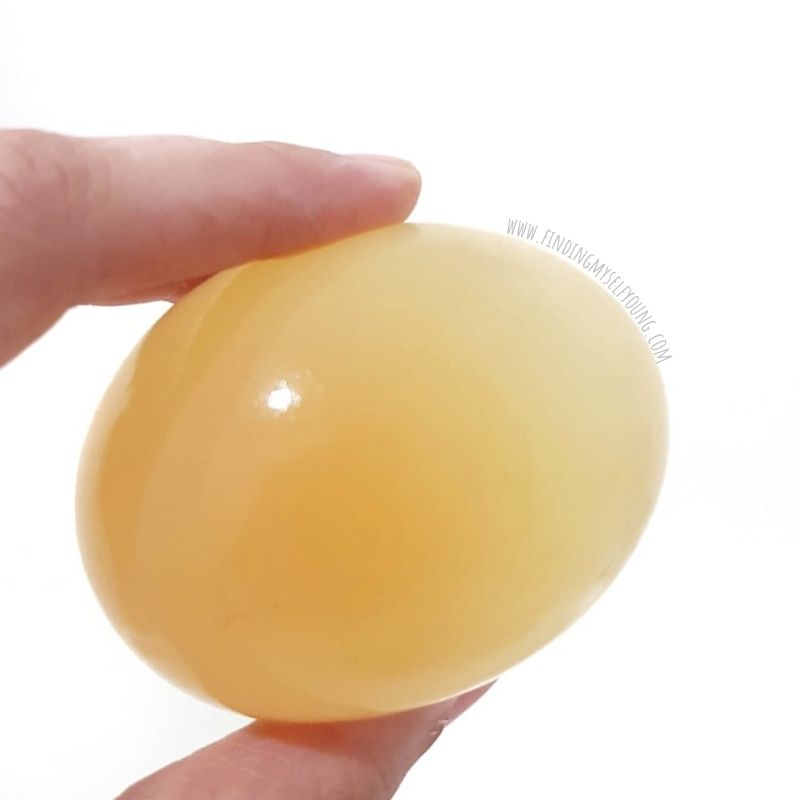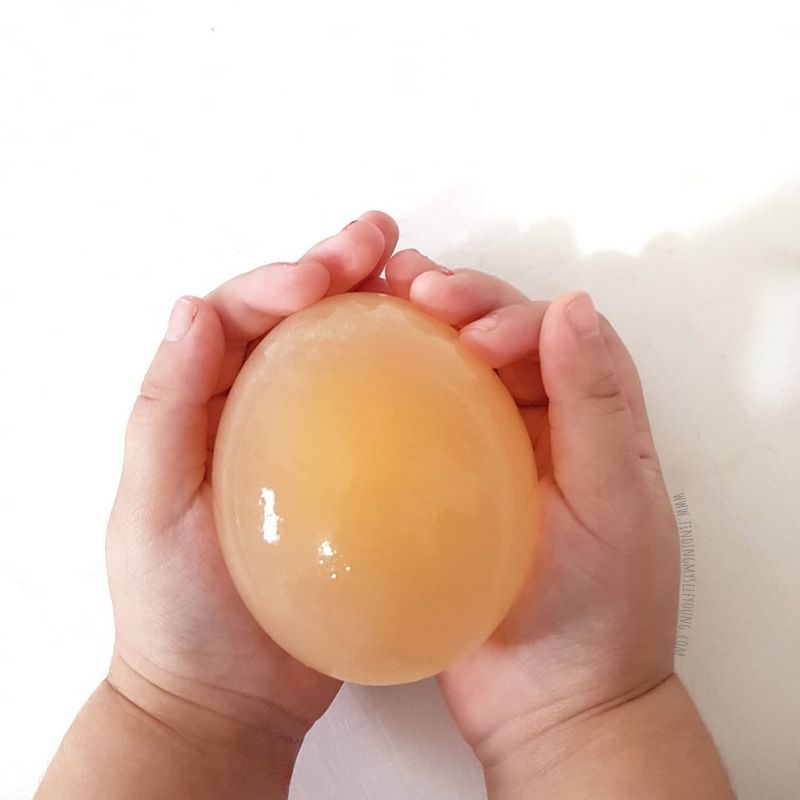Do your kids love bouncy balls? Did you know you can make a bouncy ball from an egg? This simple science experiment will show you how to turn a regular egg into a bouncy egg in just a few steps using basic household items.
CAN AN EGG REALLY BOUNCE?
Yes they absolutely can, as long as you follow the specific steps in this bouncy egg experiment. It seems to defy logic that an egg with such a fragile hard shell could possibly bounce, but it can with a little science. It's also completely possible to do with brown eggs, as you'll see below. The best part is you only need a bit of vinegar and a bit of patience.
SUPPLIES NEEDED TO MAKE A BOUNCY EGG
- Raw egg
- Vinegar
- Glass {or cup}
- Tray {or plate}
We used a glass for our bouncy egg because they're the perfect size and being clear meant we could easily watch the chemical reaction and physical changes occurring as they happened. A clear glass will also reduce the curiosity to touch the egg, reducing the risk of breaking it while the shell is still dissolving. Kids will need to wait a few days to see the full results of this experiment so make sure you put the eggs where they can't reach them while waiting for the transformation to happen.
It doesn't matter if you use brown or white eggs for this experiment - the chemical reaction and result will still be the same as the eggs have the same chemical structure, brown eggs simply have the addition of the pigment protoporphyrin IX which changes the colour of the outer shell.
HOW TO MAKE A RAW EGG TURN INTO A BOUNCY EGG
Step 1 - Carefully place the raw egg into a glass and cover with white vinegar. Make sure the egg is fully submerged in vinegar.
A few hours later you'll notice the egg shell is already starting to slowing lift off in thin layers in small areas.
Step 3 - Change the vinegar after 48hrs to fresh vinegar, completely submerging the egg as before. By day 2 the egg shell will be dissolving and lifting a lot, making the vinegar a bit cloudy. The egg will also be floating in the vinegar due to the carbon dioxide being formed. Change the vinegar and let the egg sit for another 24hrs.
Step 4 - After 3 days the egg should appear translucent which means it's ready to be rinsed under water to remove the final bits of shell. You'll notice the final bits of shell feel slimy and easily come off when rinsed under water. The egg itself will feel rubbery.
Make sure you're gentle when washing off the shell as the egg can still break if you accidentally poke it.
Step 5 - Have fun bouncing your egg! Once the egg is cleaned off you'll notice it is translucent and you can see the outline of the yolk floating around inside the egg. The egg will also be rubbery and the membrane can be squished under slight pressure {but don't squeeze it too hard or it might break}.
Once you've explored squeezing the egg slightly, try dropping it to see if it bounces. Start from a small height and see how high it bounces. Watch the videos below to see how our egg bounced.
Once you've had fun bouncing the egg, try dropping it from up higher to see if it breaks.
You'll notice that the egg doesn't crack, but rather splats and bursts like a water balloon. Explore the membrane after it breaks - what does it feel like? Is it stretchy?
EXTRA TIPS FOR THE BOUNCY EGG EXPERIMENT
- Place the glass on a window sill or somewhere obvious, but still out of reach, to reduce the temptation for kids to touch it.
- Carefully remove the floating dissolved shell with a spoon.
- Replace the vinegar if it's getting really cloudy.
- Add a few drops of food colouring if you want to make a coloured bouncy egg.
- You can also do the bouncy egg experiment with a boiled egg instead of a raw egg.
HOW DOES THE BOUNCY EGG EXPERIMENT WORK?
It may seem like magic to young children, but the eggshell reacts with the vinegar in a similar acid/base reaction to bicarb and vinegar, although it's not as dramatic and explosive. Eggshells are made of calcium carbonate {a base} which reacts with the vinegar {a mild acid} to form carbon dioxide. When the two react the calcium ions dissolve into the vinegar and the carbonate makes carbon dioxide. The bubbles on the outside of the egg are the carbon dioxide that's formed from the reaction.
That explains how to eggshell dissolves, but how does the egg become bouncy? This happens because the membrane of an egg is selectively permeable meaning certain substances can pass through it while others can't. Vinegar can pass through the membrane {also known as osmosis} which then makes the membrane tougher and rubbery. If you look closely you'll notice bouncy eggs are a lot bigger than normal eggs, this is because the vinegar that's absorbed into the membrane also makes the egg swell.
MORE FUN SIMPLE SCIENCE EXPERIMENTS
Disclosure - This post contains some affiliate links for your convenience, which means I may earn a small commission at no cost to you, should you make a purchase.


